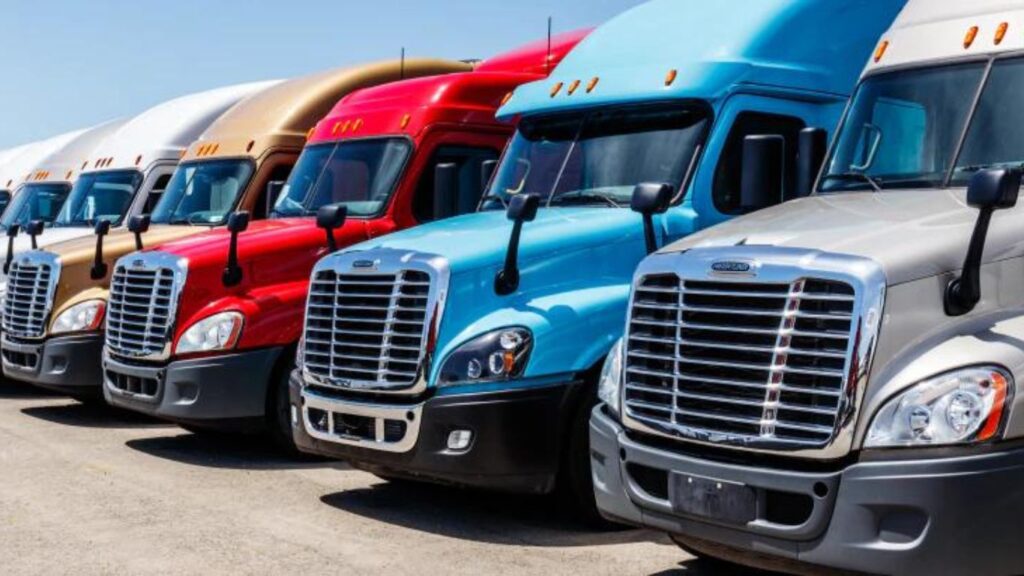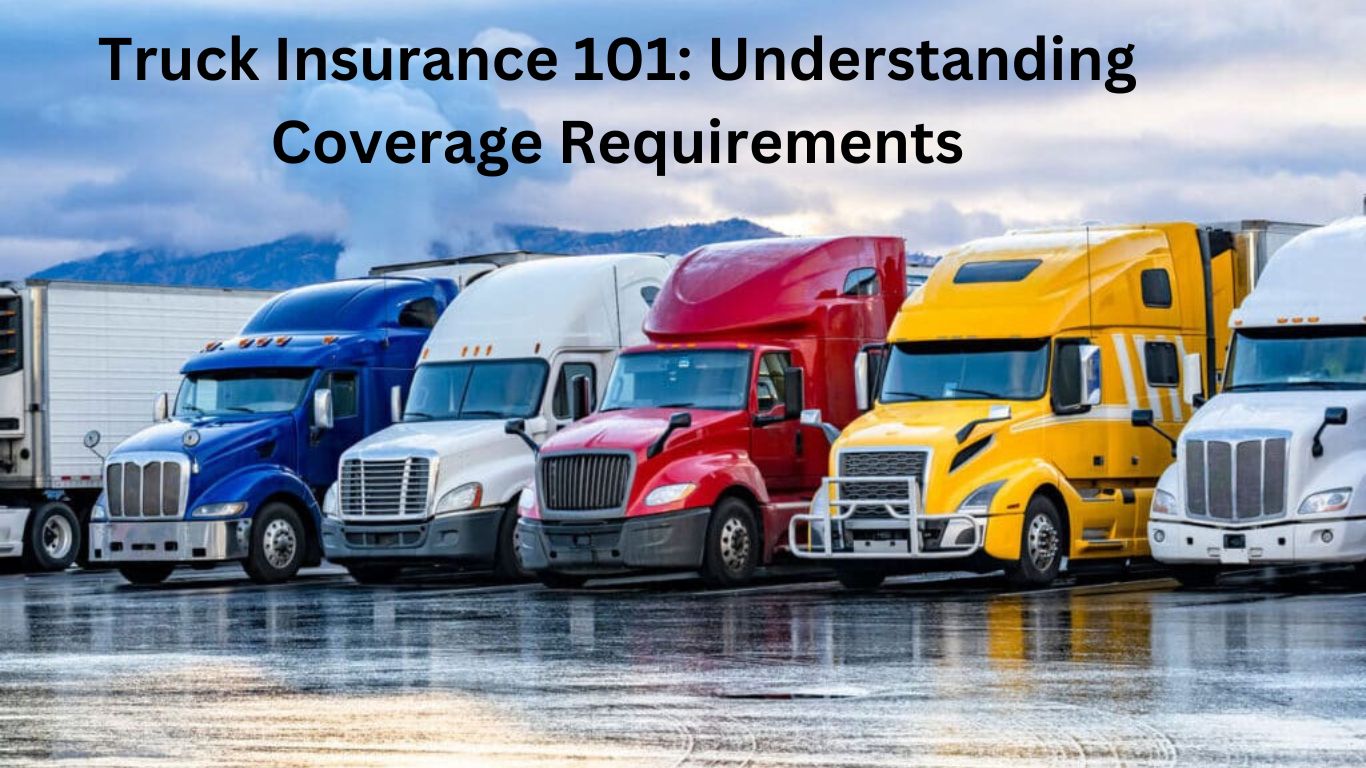Truck Insurance 101: Understanding Coverage Requirements. Truck protection is a fundamental part of working in a business shipping business or dealing with an armada of vehicles. It gives essential insurance against possible dangers, including mishaps, freight harm, and responsibility issues. Truck Insurance 101: Understanding Coverage Requirements. Understanding the various kinds of inclusion and their necessities is critical for guaranteeing you have the right protection setup. Truck Insurance 101: Understanding Coverage Requirements. This guide will cover the nuts and bolts of truck insurance, including key inclusion types, administrative prerequisites, and ways to choose the fitting contract for your necessities.
1. Why Truck Protection Is Essential
Truck protection is intended to safeguard both the truck proprietor and general society from the monetary repercussions of mishaps, harm, and different occurrences including business vehicles. Truck Insurance 101: Understanding Coverage Requirements. Without sufficient protection, you risk confronting huge personal expenses for fixes, lawful charges, and responsibility claims.
Key Advantages:
- Monetary Protection: Covers fixed costs, clinical costs, and responsibility claims.
- Lawful Compliance: Meets government and state protection necessities for working business trucks.
- Tranquility of Mind: Gives security realizing that you are safeguarded against unexpected occasions.
2. Types of Truck Protection Coverage
Understanding the different sorts of inclusion accessible can assist you with choosing a strategy that meets your particular requirements. Here are the principal sorts of truck protection inclusion:
2.1 Liability Insurance
Risk protection is an essential part of truck protection and is frequently legally necessary.
- Essential Coverage: Covers harms and wounds caused to others or property in a mishap where you are to blame.
- Legitimate Requirement: Most states and the Government Engine Transporter Security Organization (FMCSA) command the least obligation inclusion for business vehicles.
- Inclusion Limits: Incorporates in essence injury responsibility (BIL) and property harm risk (PDL), with the least required limits fluctuating by state and truck type.
2.2 Cargo Insurance
Freight protection safeguards the products being shipped in the event of harm or misfortune during travel.
- Inclusion Scope: Covers misfortune or harm to freight because of mishaps, robbery, or other covered hazards.
- Business Needs: Fundamental for organizations managing significant, delicate, or transitory products.
- Sorts of Coverage: Incorporates freight responsibility (covers harm to freight in your control) and engine truck freight protection (covers merchandise moved by your truck).
2.3 Physical Harm Insurance
Actual harm protection covers fixes to the actual truck following a mishap, robbery, or different occurrences.
- Impact Coverage: Covers harm to your truck coming about because of a crash with another vehicle or item.
- Extensive Coverage: Covers harm from non-impact occasions, like burglary, defacing, or catastrophic events.
- Deductibles: Strategies commonly incorporate a deductible that you should pay before protection inclusion kicks in.
2.4 Uninsured/Underinsured Driver Coverage
This inclusion safeguards you on the off chance that you’re associated with a mishap with sufficient driver protection.
- Uninsured Driver Coverage: Gives remuneration assuming that the to-blame driver has no protection.
- Underinsured Driver Coverage: Gives extra inclusion on the off chance that the to-blame driver’s protection is inadequate to cover the harms.
- Importance: Fundamental for safeguarding yourself against drivers who need more inclusion.
2.5 Medical Installments Coverage
Clinical installment inclusion helps pay for clinical costs coming about because of a mishap, paying little heed to blame.
- Inclusion Scope: Covers clinical expenses for the driver, travelers, and now and again, people on foot harmed in the mishap.

2.6 Non-Claimed Vehicle Coverage
This inclusion is valuable if your business periodically utilizes vehicles not claimed by the organization.
- Scope: Covers harm or obligation emerging from the utilization of vehicles that are not possessed by your business but rather utilized for business purposes.
- Importance: Fundamental for organizations that utilize rental trucks or vehicles for a brief time.
3. Regulatory Requirements
Consistency with government and state protection guidelines is basic for working business trucks legitimately.
3.1 Federal Requirements
The FMCSA sets protection prerequisites for highway shipping activities.
- Least Inclusion Limits: Shift contingent upon the sort of freight and the heaviness of the vehicle. For instance, transporters shipping dangerous materials have higher protection necessities.
- Documentation: You should give verification of protection to the FMCSA and keep up with sufficient inclusion levels in light of your tasks.
3.2 State Requirements
Each state has its protection prerequisites for business vehicles.
- Least Responsibility Limits: Differ by state, and checking your state’s particular requirements is significant.
- Extra Requirements: States might have extra necessities, like particular inclusion for specific sorts of freight or vehicles.
4. Choosing the Right Truck Protection Policy
Choosing the right insurance contract includes assessing your requirements and contrasting various choices.
4.1 Assess Your Needs
Decide the kinds of inclusion that are fundamental for your business.
- Vehicle Type: Think about the size, type, and utilization of your truck while choosing inclusion.
- Cargo: Assess the worth and sort of freight you transport to decide the important freight protection.
- Risk Factors: Survey your functional dangers, for example, the regions you travel to and the wellbeing highlights of your trucks.
4.2 Compare Protection Providers
Look around and analyze approaches from various protection suppliers.
- Inclusion Options: Search for suppliers offering the particular inclusion types and cutoff points you want.
- Premium Costs: Contrast expenses and deductibles with tracking down a strategy that accommodates your spending plan.
- Supplier Reputation: Pick a supplier with a solid standing for client support and claims taking care of.
4.3 Review and Update Your Policy
Routinely survey your insurance contract to guarantee it keeps on addressing your necessities.
- Strategy Adjustments: Update inclusion cutoff points or add extra inclusion as your business develops or changes.
- Claims History: Screen your case history and work with your backup plan to oversee chances and possibly lower charges.
5. Tips for Bringing down Truck Protection Premiums
While truck insurance can be exorbitant, there are approaches to decrease payments possibly.
5.1 Improve Wellbeing and Chance Management
Executing well-being measures and the executive’s methodologies can decrease the probability of mishaps and cases.
- Security Training: Give standard well-being preparation to drivers to limit mishaps.
- Maintenance: Guarantee trucks are very much kept up with and outfitted with security highlights.
- Risk Assessment: Consistently evaluate and address expected gambles in your tasks.
5.2 Increase Deductibles
Selecting higher deductibles can bring down your premium, yet guarantee that the deductible is sensible for your business.
5.3 Bundle Policies
Think about packaging truck protection with different kinds of business protection, like property or obligation protection, to meet all requirements for limits possibly.
5.4 Shop Around
Routinely contrast statements from various safety net providers to track down the best rates and inclusion choices.
End
Understanding truck protection inclusion prerequisites is fundamental for safeguarding your business and guaranteeing consistency with administrative principles. By diving more deeply into the different kinds of inclusion, administrative necessities, and variables influencing expenses, you can settle on informed conclusions about your protection needs.
Picking the right strategy includes surveying your particular requirements, contrasting choices, and routinely assessing your inclusion to adjust to changes in your business. Carrying out well-being measures and investigating cost-saving techniques can assist with overseeing protection costs. With the right protection setup, you can work your shipping business with certainty and inner serenity.
